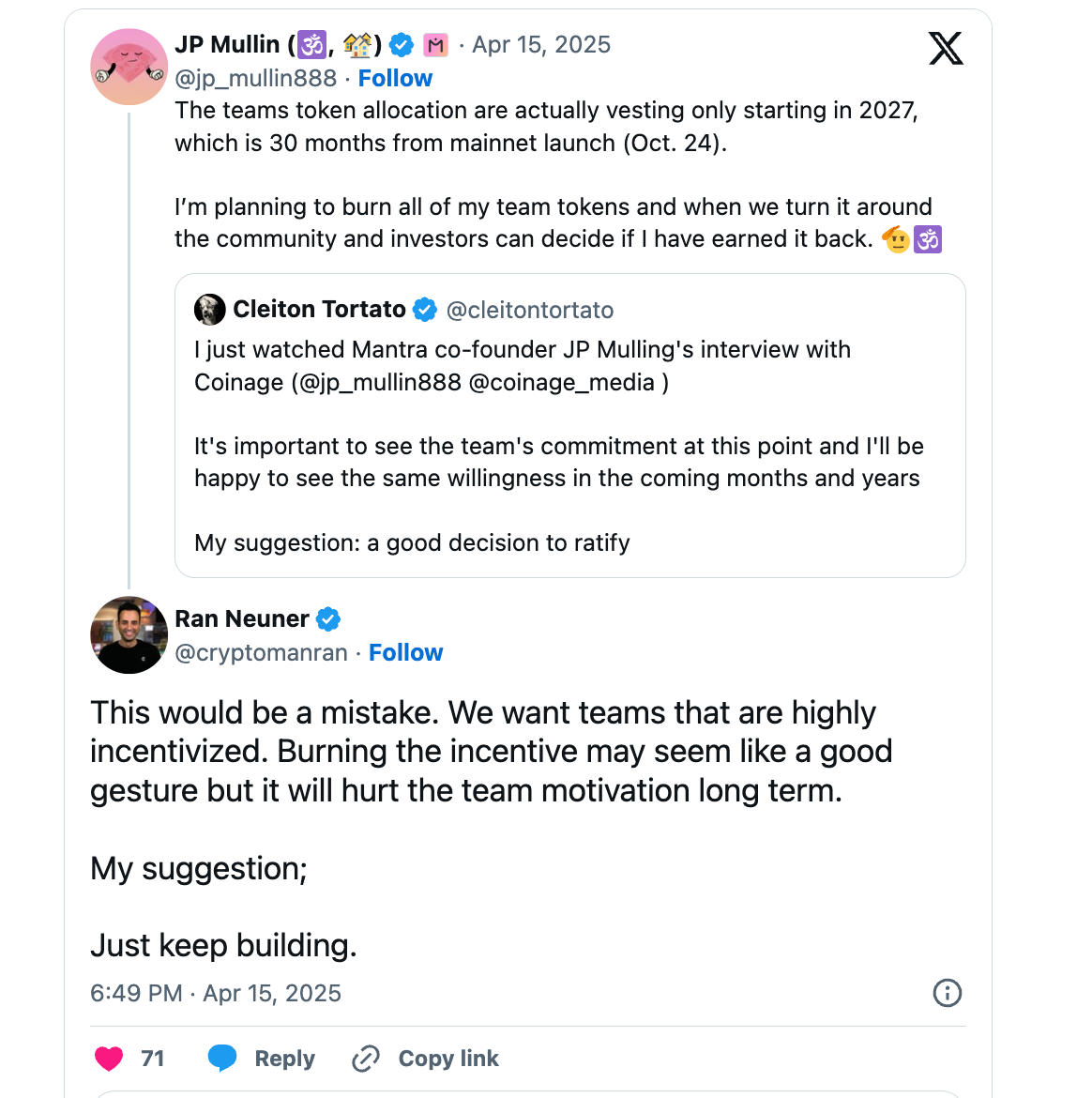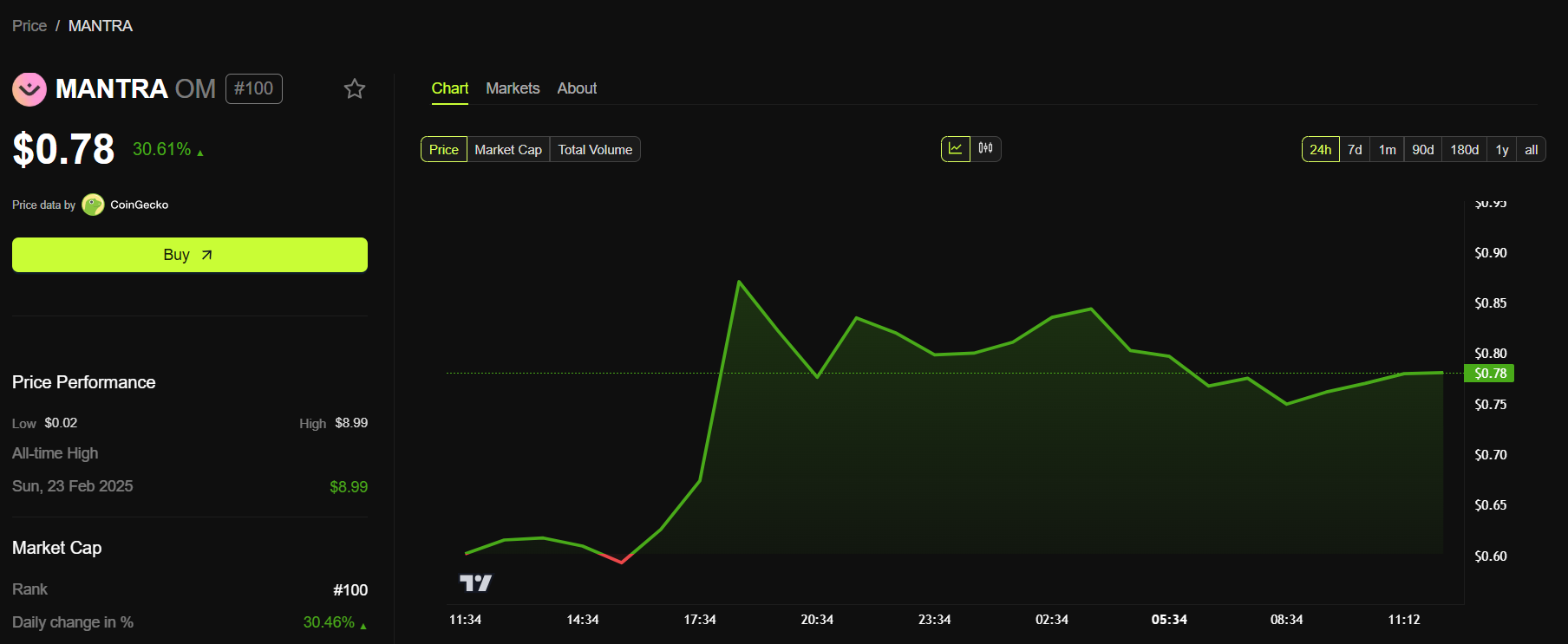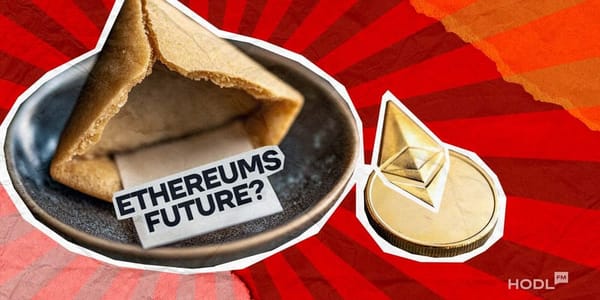Following a $5.5B market wipeout, Mantra's leadership eyes token burns and buybacks amid limited transparency and ongoing investigation.
Just days after a catastrophic 92% flash crash that wiped more than $5.5 billion from Mantra's market cap, CEO John Patrick Mullin has proposed burning his personal token allocation in a bold bid to restore shattered investor confidence.
The OM token, which nosedived from $6.30 to below $0.50 on April 13, has since shown signs of life — jumping over 30% in the 24 hours following the crash. But the community remains rattled, with many demanding clearer answers from the Mantra team about what triggered the sudden and dramatic collapse.
Limited Transparency and Unanswered Questions
In an April 16 statement titled “Statement of Events: 13 April 2025,” Mantra attempted to explain the crash. However, the post offered few new insights, reiterating that the project itself had not sold any tokens and was still investigating the incident. The team emphasized its continued functionality and pointed to a divergence in OM spot prices between OKX and Binance as one of the early signs of trouble — though it stopped short of providing a definitive cause (data from CoinGecko).
“We invite our centralized exchange partners to collaborate on providing more clarity on trading activities during this time,” the statement read.
Mantra also clarified that the crash involved its Ethereum-based ERC-20 OM token — which comprises virtually the entire liquid supply — rather than the OM tokens issued on its proprietary mainnet. As of mid-April, only 77.5 million OM were in circulation on the Mantra Chain, compared to 888.8 million circulating ERC-20 tokens.
Despite community demands, the promised post-mortem report has yet to be released.
CEO Proposes Token Burn and Community Control
As community trust plummeted and allegations of a pump-and-dump scheme surfaced, CEO John Mullin took to X (formerly Twitter) with a striking proposal: burn his own team-allocated tokens and give the community a chance to decide if he deserves them back later.
“I’m planning to burn all of my team tokens, and when we turn it around, the community and investors can decide if I have earned it back,” Mullin wrote.
According to disclosures, Mullin’s allocation includes 772,000 OM tokens. The team allocation overall comprises 300 million OM (16.88% of the total 1.78 billion supply) — all of which remain locked under a vesting schedule until April 2027, with full vesting to be completed by October 2029.
I'm 100% staked on @FluxtraMantra pic.twitter.com/IVQJ3Pmp9E
— JP Mullin (🕉, 🏘️) (@jp_mullin888) April 15, 2025
He later clarified that the burn proposal would begin with only his personal share and floated the idea of placing the tokens under a community-controlled dispersal mechanism instead of destroying them outright.
“Regardless, we keep building,” Mullin added.
Critics Say Burning Team Tokens May Backfire
While the gesture was seen by some as a sincere attempt to rebuild community goodwill, it was met with skepticism by others. Crypto Banter founder Ran Neuner argued that such a move could be counterproductive.
“We want teams that are highly incentivized. Burning the incentive may seem like a good gesture but it will hurt the team motivation long term,” Neuner warned.
He instead suggested that the Mantra team focus on improving the product and delivering consistent value — which would naturally help restore investor trust.

Buyback and Recovery Strategy in Motion
Mantra has confirmed that it is working on a comprehensive recovery plan, including a token buyback and supply burn program. However, the team has yet to announce a timeline for these initiatives or disclose funding sources.
In a recent interview, Mullin reiterated that the team did not sell any OM tokens during the crash. A transparency report had been published the week prior, showing that the team’s wallet holdings remained untouched. Mullin also revealed that although the Mantra Chain Association conducted OTC deals worth between $25 million and $30 million to fund operations, none of the tokens involved in those deals have been unlocked or transferred.
“None of the OTC sales that we’ve had have actually been executed yet. So the tokens are all still locked,” Mullin said.
The CEO maintained that neither he nor the project team took leveraged positions on exchanges — denying speculation that insider trading or financial mismanagement may have triggered the collapse.
OM Token Shows Signs of Recovery
Despite the turbulence, OM has shown resilience. Data from BeInCrypto showed a sharp 30% recovery in price the day after the crash, with the token hovering around $0.78 at press time.

Still, sentiment remains fragile. Investors and community members continue to call for a full forensic report detailing the events that led to the flash crash — especially as suspicions of manipulation and central exchange involvement persist.

,




